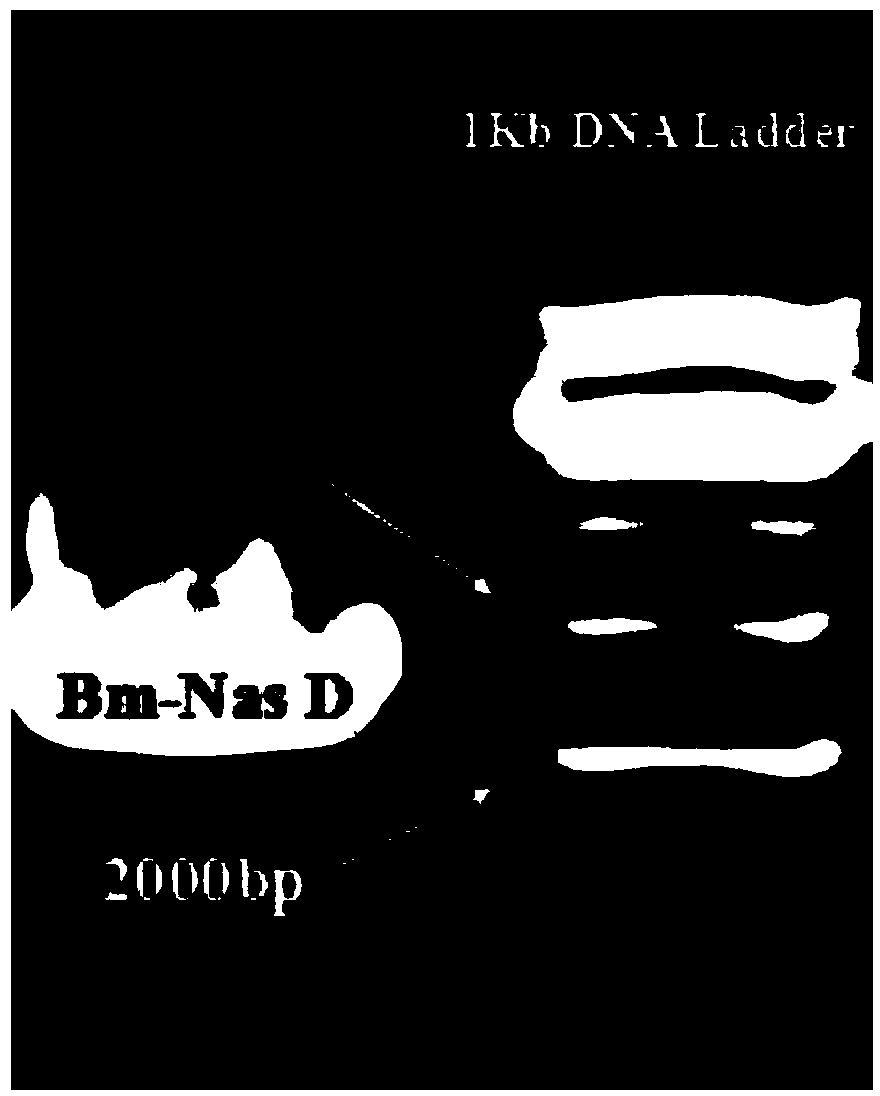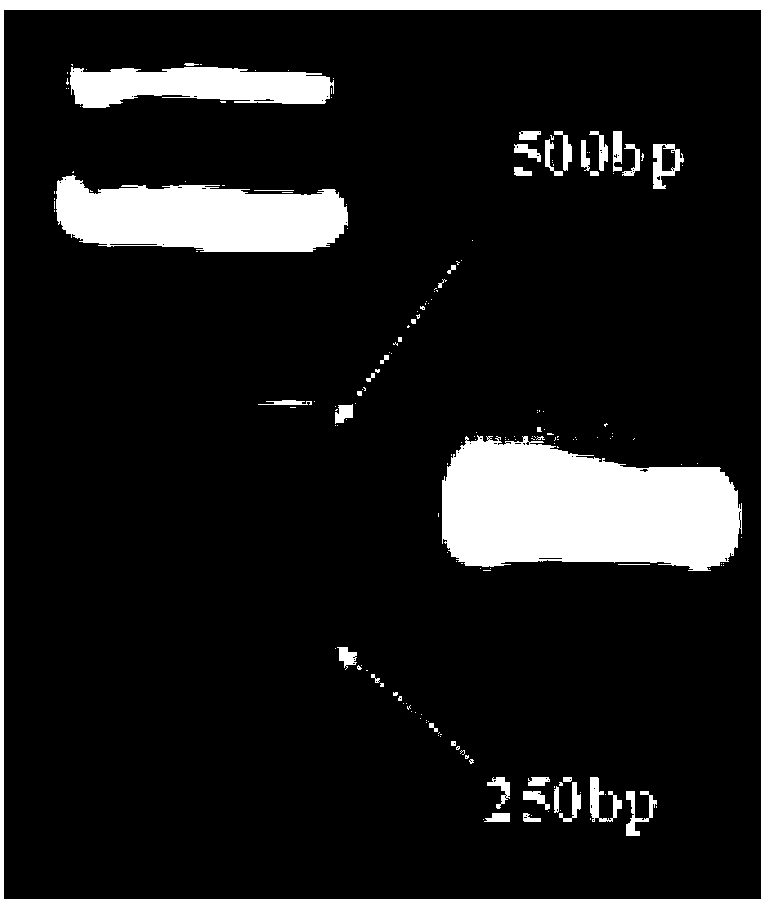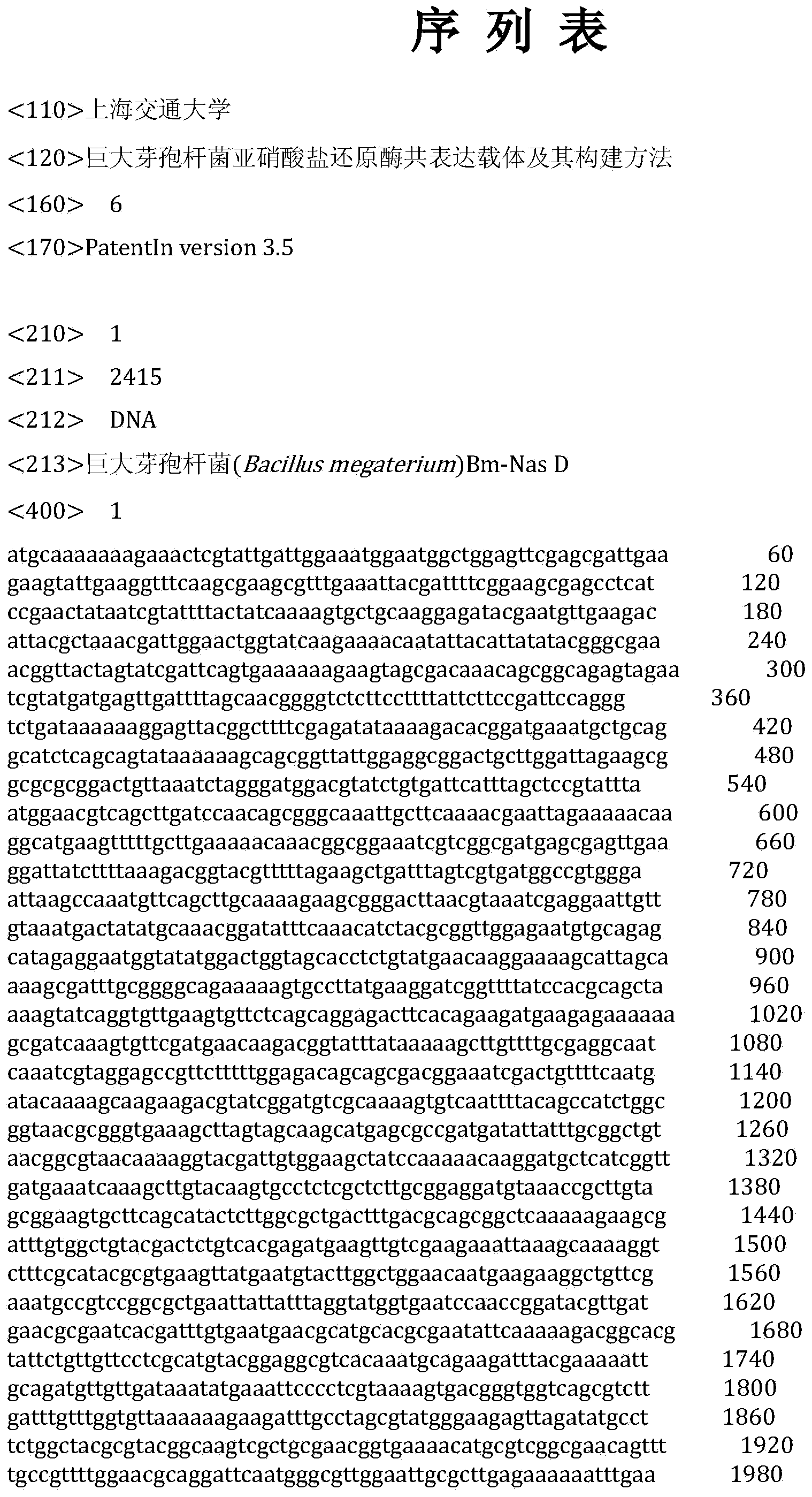Bacillus megaterium co-expression vector for nitrite reductase and construction method thereof
A technology of Bacillus megaterium and co-expression vector, applied in the field of genetic engineering, can solve the problems of failing to meet the requirements of repairing the environment and low expression of nitrite reductase
- Summary
- Abstract
- Description
- Claims
- Application Information
AI Technical Summary
Problems solved by technology
Method used
Image
Examples
Embodiment 1
[0019] Cultivation of Bacillus megaterium NCT-2
[0020] Bacillus megaterium NCT-2 was isolated from a greenhouse cultivated in Chongming Island, Shanghai for 12-15 years. The preservation number is CGMCC NO.4698. No. 3, No. 1 Yard, Beichen West Road, District, Institute of Microbiology, China; date of preservation is March 21, 2011. The bacteria were inoculated in LB liquid medium and cultured at 32°C for OD 600 To about 1.5, the bacteria were collected by centrifugation and used to extract the genomic DNA of the bacteria.
[0021] The components of the LB liquid medium are: 10 g of peptone, 5 g of yeast extract, 10 g of NaCl, 1 L of deionized water, and pH 6.8-7.2. LB solid medium is 15-20g agar added on the basis of LB liquid medium.
Embodiment 2
[0023] Construction of pETDuet-1-Bm-Nas D recombinant vector
[0024] According to the nitrite reductase electron transfer subunit (Bm-Nas D) gene sequence obtained by sequencing, corresponding primers were designed to amplify the gene and respectively connected to the pETDuet-1 co-expression vector.
[0025] Primers were designed as follows:
[0026] Forward primer Nas D-BamH I-F:
[0027] 5'-CGGGATCCATGCAAAAAAAGAAACTCGTATTGAT-3'
[0028] Reverse primer Nas D-EcoR I-R:
[0029] 5'-CGGAATTCTTATGATGTGACAACTGTTTCGAACAG-3'
[0030] BamH I and EcoR I restriction sites were designed at the 5' ends of the upstream and downstream primers to connect to the co-expression vector pETDuet-1, and the gene sequence of the large subunit of nitrite reductase was amplified with the primers containing the restriction sites. The PCR product was ligated to the pMD19-T (Simple) vector, and the ligated product was transformed into DH5α Escherichia coli competent cells. The positive clones were...
Embodiment 3
[0033] Construction of pETDuet-1-Bm-Nas D-Nas E recombinant vector
[0034] According to the nitrite reductase small subunit (Bm-Nas E) gene sequence obtained by sequencing, corresponding primers were designed to amplify the gene and connected to the pETDuet-1-Bm-Nas D recombinant vector.
[0035] Primers were designed as follows:
[0036] Forward primer Nas E-Kpn I-F:
[0037] 5'-GGGGTACCATGGTGAATAAAAACATTACAAAAG-3'
[0038] Reverse primer Nas E-Xho I-R:
[0039] 5'-CCGCTCGAGTTATTCCTCAATTAAAAGATACAGCA-3'
[0040] Use primers containing Kpn I and Xho I restriction sites to amplify the nitrite reductase small subunit gene sequence and connect the PCR product to the pMD19-T (Simple) vector, and transfer the ligated product into DH5α Escherichia coli competent cells . The positive clone was picked and its plasmid was recovered, and then digested with Kpn I and Xho I to recover the fragment Bm-Nas E' containing the catalytic subunit of nitrite reductase. Digest the pETDuet-1...
PUM
 Login to View More
Login to View More Abstract
Description
Claims
Application Information
 Login to View More
Login to View More - R&D
- Intellectual Property
- Life Sciences
- Materials
- Tech Scout
- Unparalleled Data Quality
- Higher Quality Content
- 60% Fewer Hallucinations
Browse by: Latest US Patents, China's latest patents, Technical Efficacy Thesaurus, Application Domain, Technology Topic, Popular Technical Reports.
© 2025 PatSnap. All rights reserved.Legal|Privacy policy|Modern Slavery Act Transparency Statement|Sitemap|About US| Contact US: help@patsnap.com



